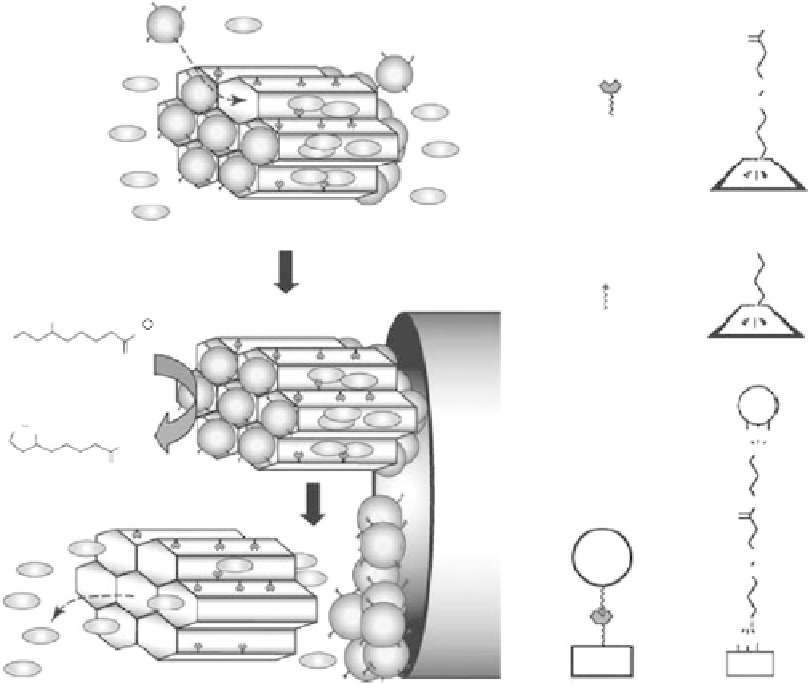Biomedical Engineering Reference
In-Depth Information
= Fluorescein
OH
Fe
3
O
4
O
S
=
S
Si
Linker-MSN
NH
2
Amidation
=
Si
SH
Magnet-MSN
O
HS
O
DHLA
Fe
3
O
4
S
S
O
O
O
O
Si
O
Linker cleavage
Magnet
NH
O
Fe
3
O
4
Fe
3
O
4
S
=
S
S
O
O
MSN
MSN
FIGURE 9.9
The schematic of the stimuli-responsive delivery system (magnet-MSN) based on mesoporous sil-
ica nanorods capped with Fe
3
O
4
nanoparticles. The controlled-release mechanism of the system is based on reduc-
tion of the disulfi de linkage between the Fe
3
O
4
nanoparticle caps and the linker-MSN hosts by reducing agents
such as dihydrolipoic acid (DHLA). (Reprinted from Giri, S. et al.,
Angew. Chem. Int. Ed.
, 44, 5038, 2005.)
leaching by capping the mesopores [54]. When disulfi de reducing agents such as DHLA and DTT
were added to a suspension of magnet-MSNs in PBS solution, a rapid release of the mesopore-
entrapped fl uorescein occurred. Of the total release of fl uorescein, 85% (40% of total loading)
was attained within 48 h; the maximum extent of release was achieved after 5 days. With DHLA,
the maximum percentage of fl uorescein released was 31.4% of the total loading. Interestingly, the
release rates of fl uorescein by the two different triggers showed similar diffusional kinetic profi les,
indicating the similar reducing powers of DHLA and DTT. In addition, the magnet-MSNs could
be endocytosed by human cervical cancer (HeLa) cells and were biocompatible with HeLa cells
in vitro
, exhibiting promising potential applications in the development of new generations of drug
delivery systems.
The hollow tubular structures are very interesting and promising candidates for various appli-
cations, including drug delivery [55]. The magnetic tubular structures with drug-friendly interiors
and target-specifi c exteriors are favorable for multifunctional targeted drug delivery. Lee et al. [56]
reported the synthesis of magnetic nanotubes and their applications for magnetic fi eld-assisted
chemical and biochemical separations, biointeraction, and drug delivery. These researchers syn-
thesized silica nanotubes with a layer of magnetite (Fe
3
O
4
) nanoparticles on the inner surface of the
nanotube using porous alumina fi lm as template (60 and 200 nm pore diameters). Silica nanotubes




